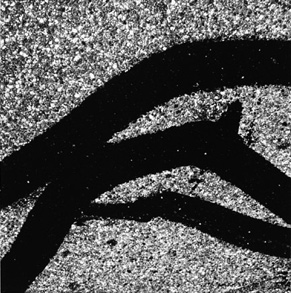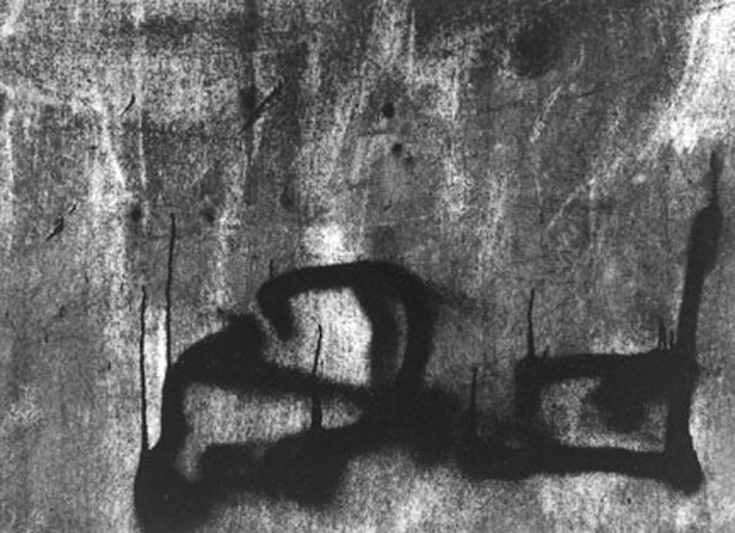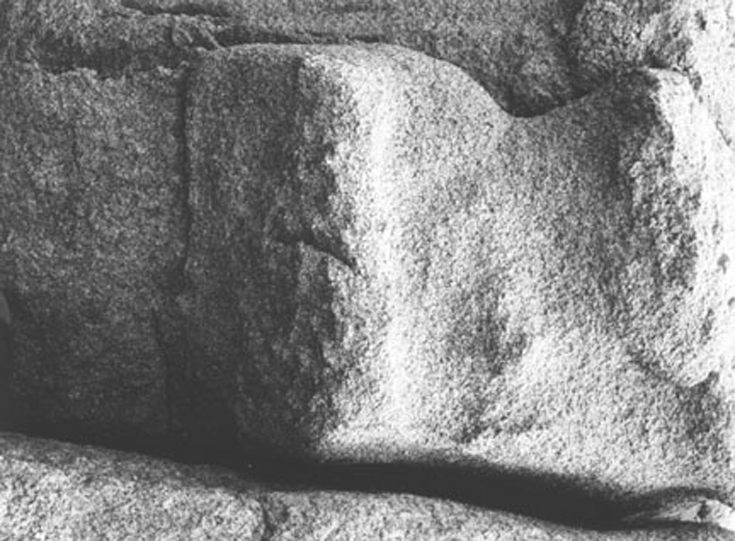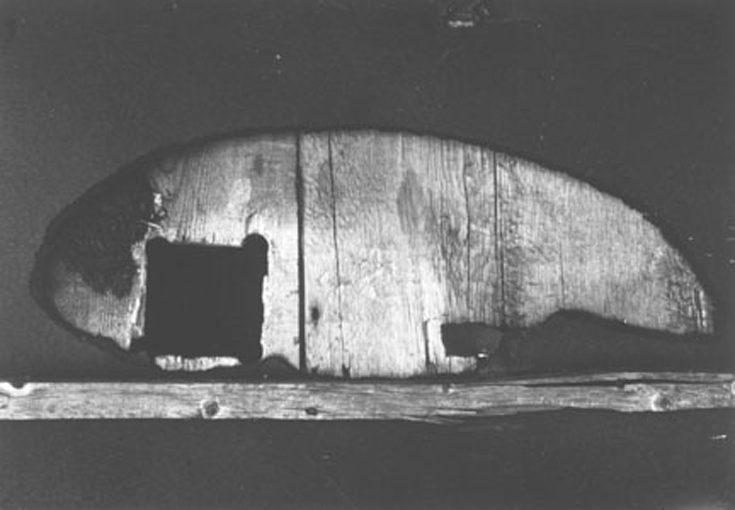Aaron Siskind

About the Exhibition
The Museum of Contemporary Photography celebrates the centennial of Aaron Siskind’s birth with an exhibition featuring three bodies of work: Seaweed (1947-1953), The Pleasures and Terrors of Levitation (1953-1963), and an untitled series (road tar, 1986-88).
Siskind’s road tar pictures, his last works, feature the dark curvilinear shapes of tar painted over cracked and weathered asphalt. Sometimes the tar sweeps across the frame in a single graceful arc, while other times a mass of thick strokes violently knot and collide. Whether brushed in straight clean lines or wending and uneven ones, the marks of tar are surprisingly beautiful and coherent given their consummately utilitarian origin. In its sense of tension and calligraphic composition, Siskind’s road tar photographs resonate with his earlier projects.
Highly formal, yet concerned with the subject as well as the idea they communicate, The Pleasures and Terrors of Levitation photographs depict the dark shapes of divers suspended mid-leap against a blank white sky. The balance and conflict suggested by the series’ title is evident in their sublime contortions.
The Seaweed series comes from a transitional period in the late 1940s when what Siskind called “the desire to see the world clean and fresh and alive, as primitive things are clean and fresh and alive” shifted his work from a traditional documentary style to greater abstraction. Like the road tar pictures, the Seaweed images demonstrate both his genius for abstracting surfaces from their normal context and his ongoing dialogue with the American Abstract Expressionist painters.
Aaron Siskind was born in New York in 1903, and taught high school English for 21 years. He began his photography career as a documentarian in the New York Photo League, going on to teach at the Institute of Design in Chicago and later the Rhode Island School of Design. He died in 1991 at the age of 87. The Aaron Siskind Centennial Celebration takes place during 2003/2004 with exhibitions at more than a dozen institutions across the country, each devoted to a different period or theme of the photographer’s life and work.
-Kendra Greene, Curatorial Assistant
Image Gallery




